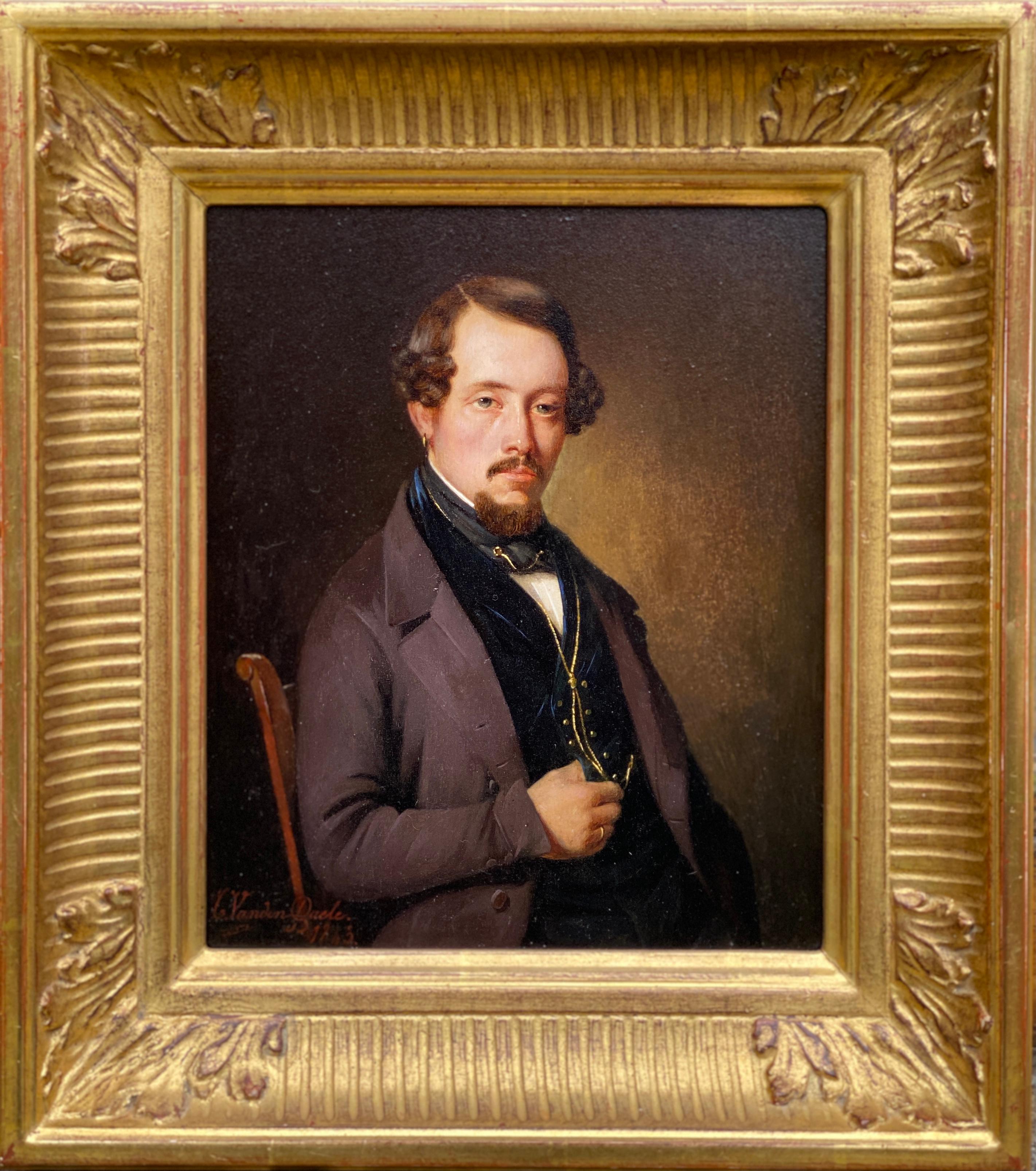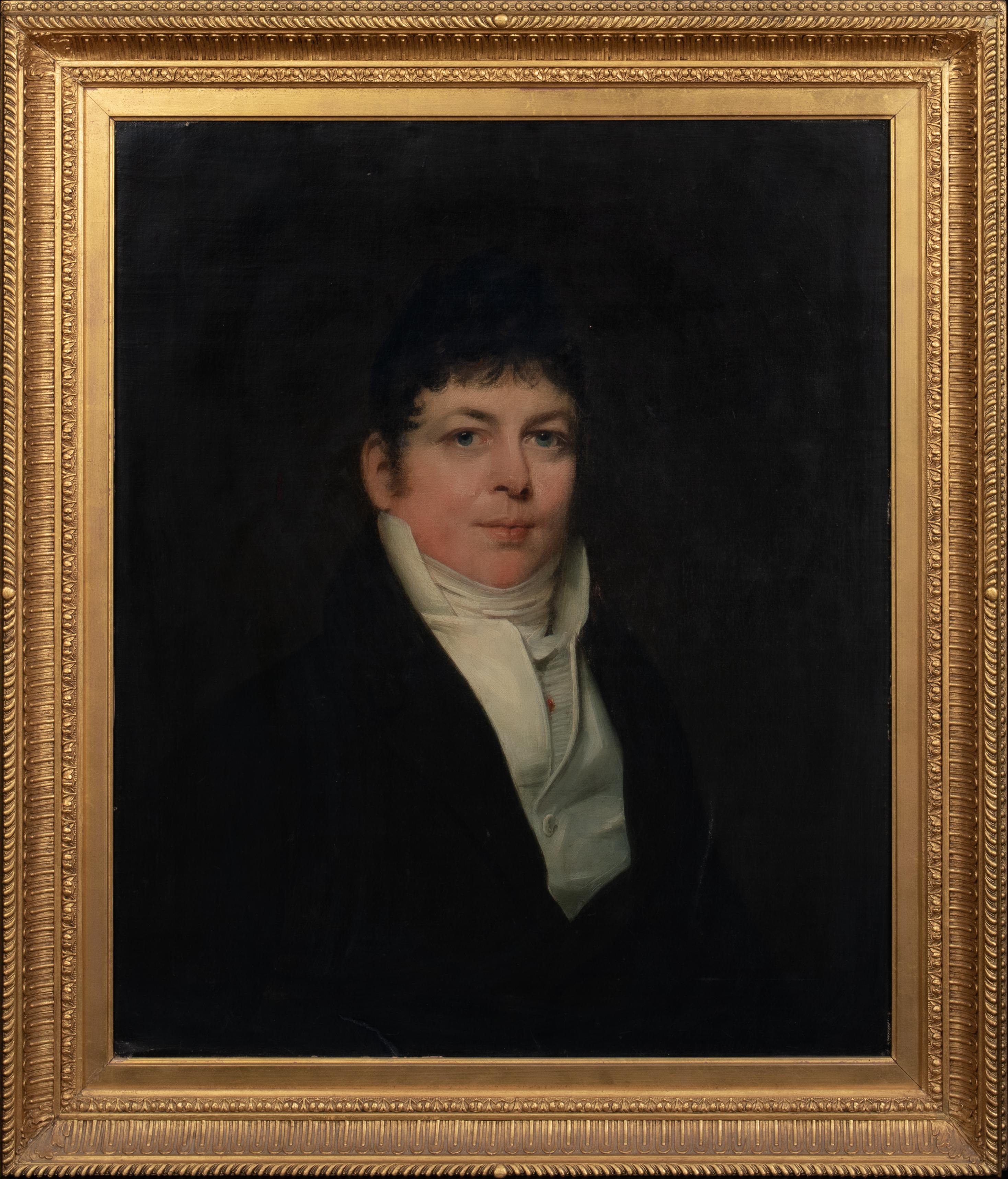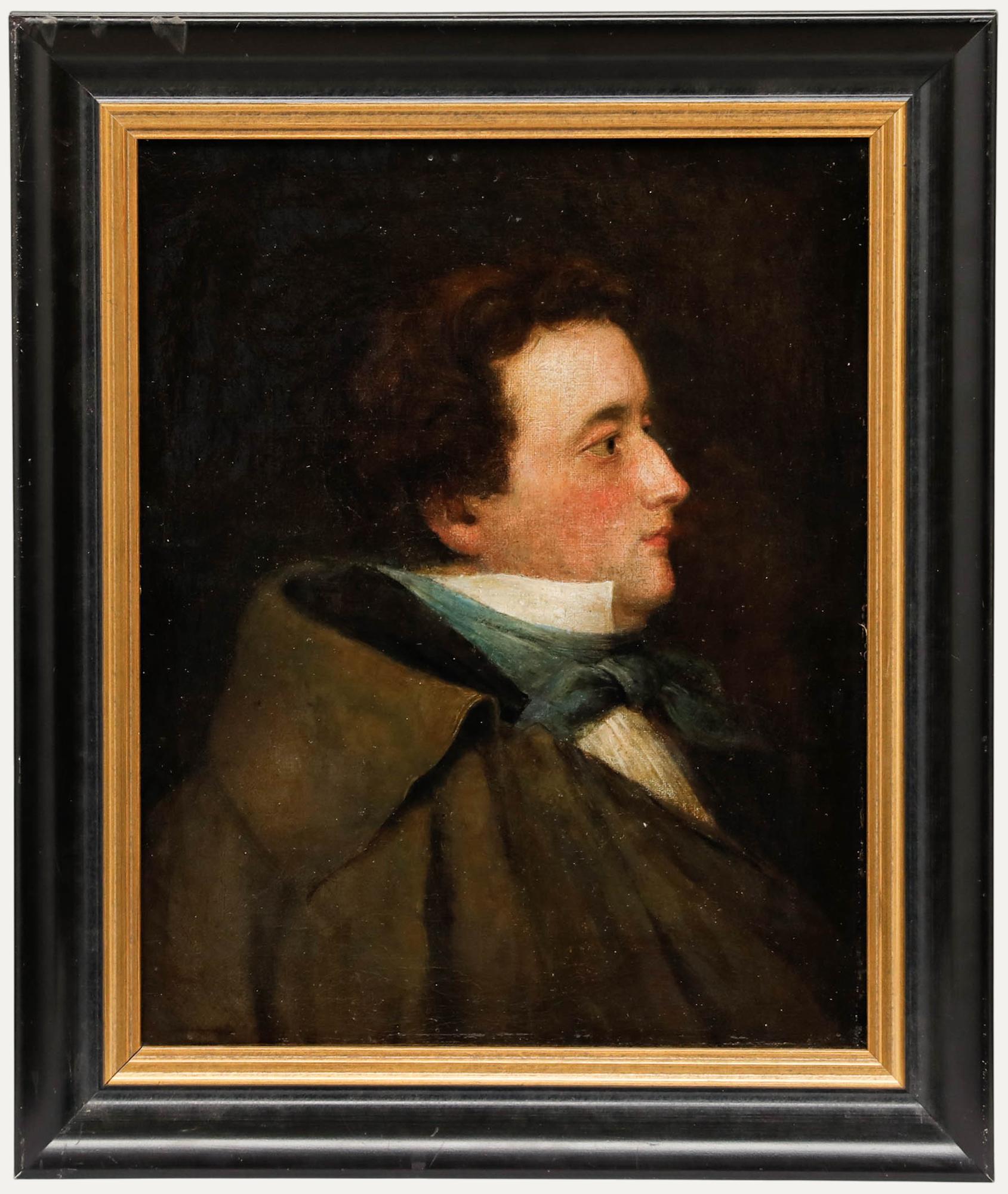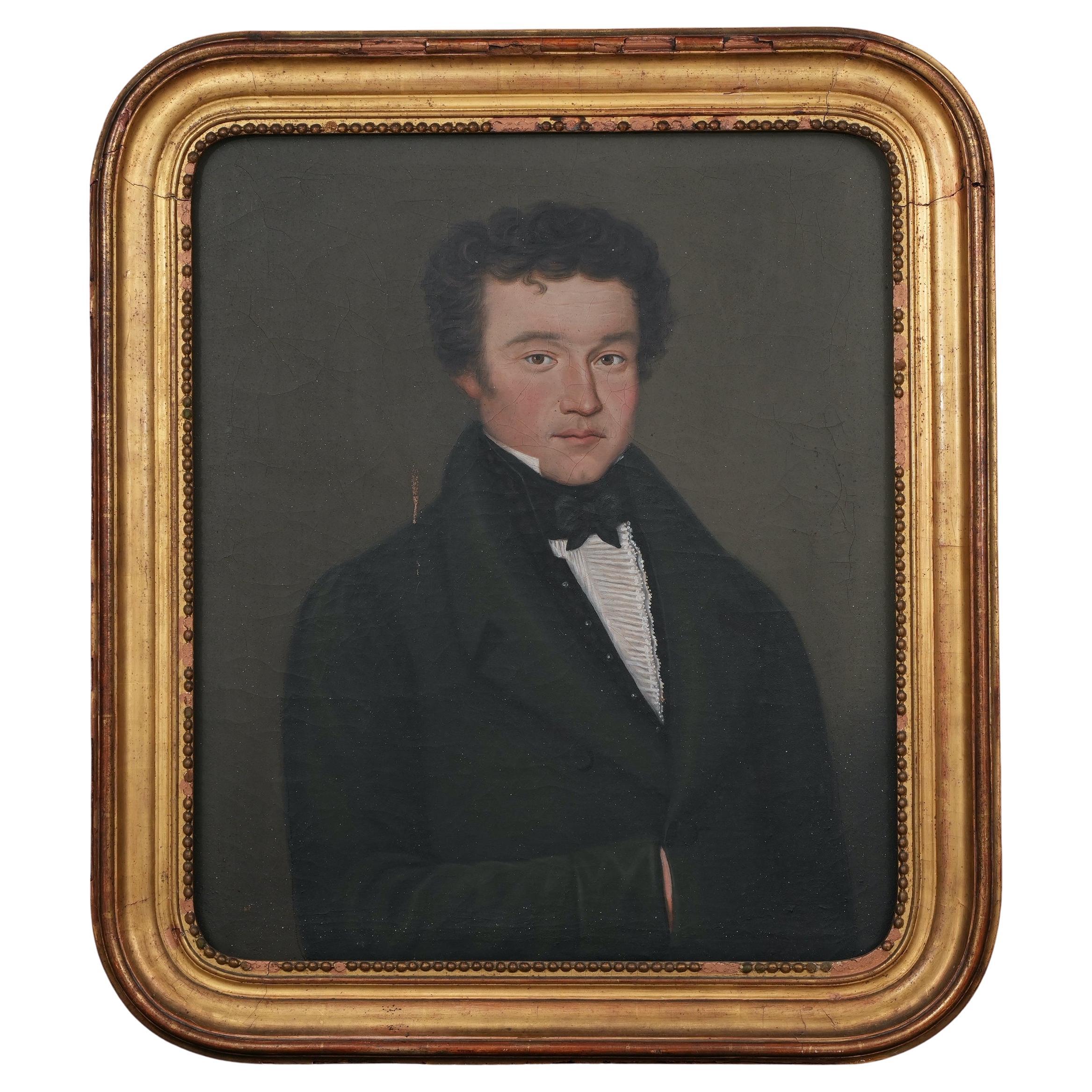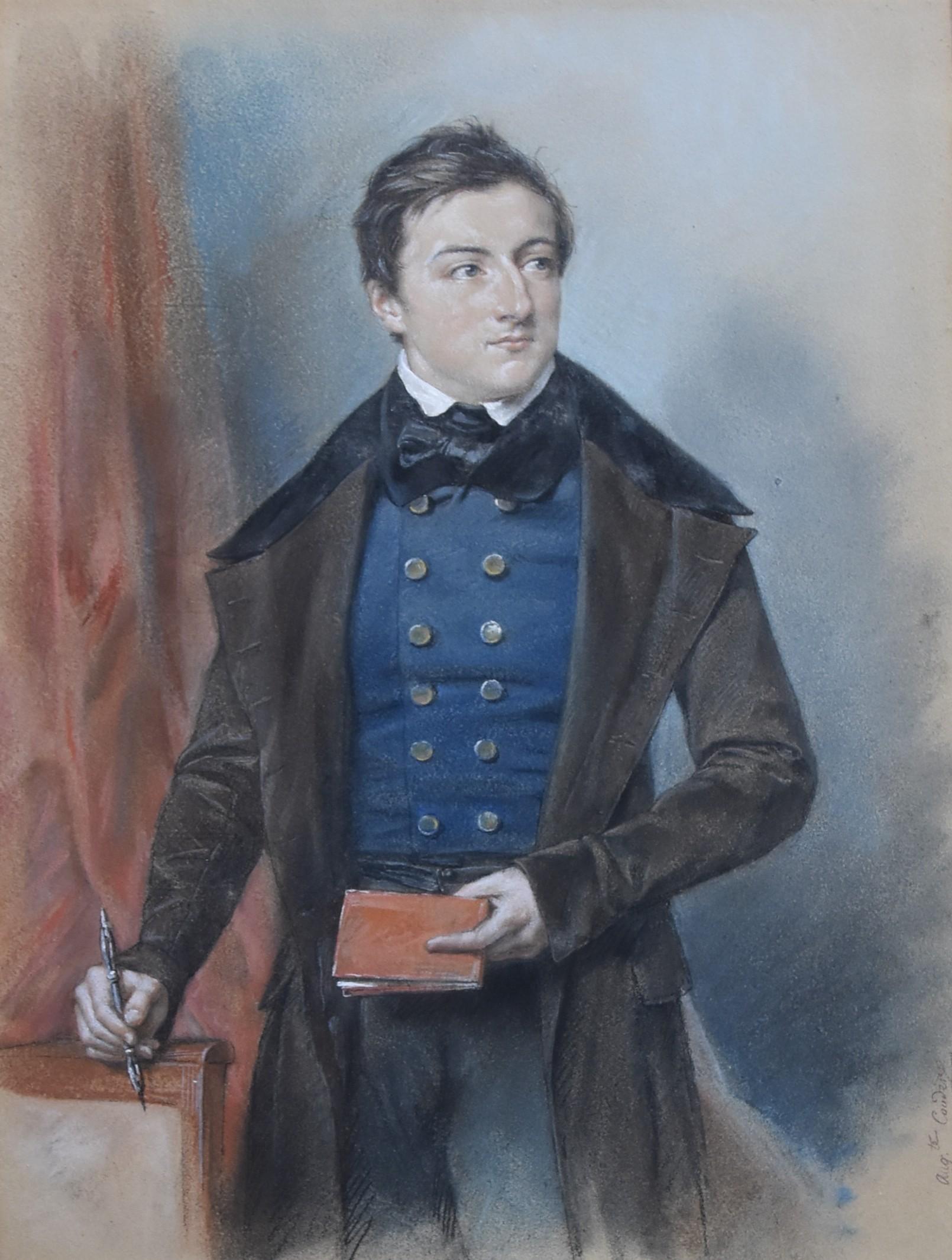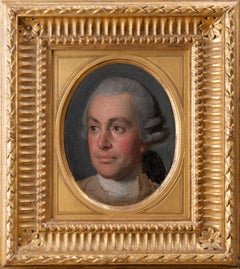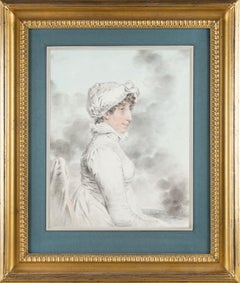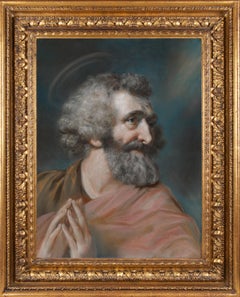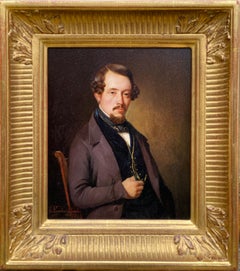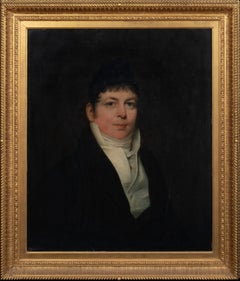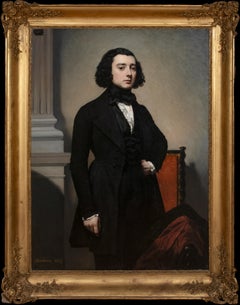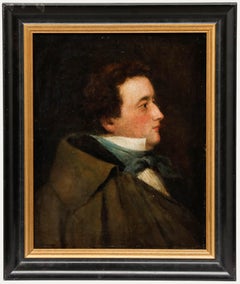Items Similar to 19th century portrait painted in St Petersburg in 1819
Want more images or videos?
Request additional images or videos from the seller
1 of 8
George Dawe19th century portrait painted in St Petersburg in 18191819
1819
$223,792.79
£160,000
€191,074.96
CA$306,144.07
A$342,583.80
CHF 178,881.16
MX$4,211,711.23
NOK 2,256,792.11
SEK 2,123,630.25
DKK 1,425,565.69
Shipping
Retrieving quote...The 1stDibs Promise:
Authenticity Guarantee,
Money-Back Guarantee,
24-Hour Cancellation
About the Item
Signed, inscribed and dated, lower right:
'Geo Dawe RA St Petersburgh 1819', also signed
with initials, lower centre: 'G D RA'; and signed and inscribed verso:
'Geo Dawe RA Pinxit 1819 St Petersburgh';
Also inscribed on the stretcher by Cornelius Varley with varnishing instructions.
Collections:
Private collection, UK, 2010
Literature:
Galina Andreeva Geniuses of War, Weal and Beauty: George Dawe RA,
Moscow, 2012, illustrated p.122.
This remarkably vivacious portrait was executed very soon after Dawe’s arrival in St Petersburg where he was to fulfil a commission from Alexander I, Emperor of Russia, to paint the heroes of the 1812 campaign. This commission was to occupy Dawe for the rest of his career and resulted in a gallery of over three hundred portraits for the Military Gallery of the Winter Palace (Hermitage Museum, St Petersburg). This, as yet, unidentified portrait, appears to have returned home with Dawe at the end of stay in Russia and may well be a record of an early friendship made in St Petersburg’s artistic or literary circles.
Dawe is now the least celebrated of the major late Georgian portrait painters in spite of being compared in his lifetime with both Thomas Lawrence and Jacques-Louis David. Undoubtedly, his removal from London at a vital period of his career left the field entirely clear for Lawrence, whose only clear rival he was. Dawe certainly made a rapid impression in Russia with Pushkin dedicating the following verse to him:
'Why does your wondrous pencil strive
My Moorish profile to elicit?
Your art will help it to survive,
But Mephistopheles will hiss it.
Draw Miss Olenin's face. To serve
His blazing inspiration's duty,
The genius should spend his verve
On homage but to youth and beauty.'
George Dawe was the son of Philip Dawe a well-known engraver, and named after his godfather, the painter, George Morland. His younger siblings, Henry, James and Mary all followed artistic careers. George trained as an engraver and in 1794 entered the Royal Academy Schools and in 1803 received the gold medal for Achilles, Frantic for the Loss of Patroclus, Rejecting the Consolation of Thetis (Museum of New Zealand Te Papa Tongarewa, Wellington), which was regarded by contemporaries as ‘the best ever offered to the Academy on a similar occasion’. He first exhibited at the Royal Academy in 1804 and the rise of this talented painter through the hierarchy was rapid, being elected an Associate in 1809 and an Academician in 1814. Dawe continued to exhibit portraits but mostly subject pictures up until his the time of his elevation at the Academy and thereafter showed only portraits having secured his reputation as a painter.
Dawe established a respectable practise as a portrait painter from about 1806 and in 1809 exhibited his full-length portrait of Mrs White, one of the most remarkable portraits of the period. By 1811 he was receiving the patronage of the banker, Thomas Hope, one of the principal connoisseurs and arbiters of taste of the day and Dawe’s success was assured. In the summer of 1815 Dawe briefly employed John Constable, with whom he had been acquainted since 1806, to paint in the background for the full-length portrait of the actress Eliza O'Neill as Juliet: this theatrical scene, full of romantic atmosphere achieved by the effect of glittering lamplight, stirred public opinion when exhibited both in London at the Royal Academy in 1816 and later in St Petersburg in 1827.
Dawe seems to have established himself in the unofficial rôle of a Court Painter with commissions of portraits of Princess Charlotte and Prince Leopold of Saxe Coburg Saalfeld, later king of the Belgians, who married in 1816 and the Duke and Duchess of Kent. Under the patronage of the Duke of Kent, Dawe travelled as part of his retinue, visiting Paris, Cambrai, Brussels, and Aix-la-Chapelle for the Congress between Britain, Austria, Prussia and Russia. In the autumn of 1818 while working at Aix on a portrait of Prince Volkonsky, Dawe was noticed by Emperor Alexander I and invited to go to St Petersburg to paint, on very profitable terms, more than three hundred portraits of Russian commanders who had distinguished themselves in the campaign against Napoleon.
Dawe travelled to the Russian capital via Germany, where in Weimar he met and painted Goethe (Goethe Museum, Weimar) and discussed with him his essay on the theory of colour then in preparation. Dawe arrived in St Petersburg in the spring of 1819 and established his studio there for ten years until May 1828, although he briefly returned in the spring of 1829. For five years, until the Military Gallery opened in the Winter Palace in December 1826, Dawe's studio included his brother Henry and brother-in-law Thomas Wright (who married Mary Margaret Dawe in St Petersburg in 1825). Dr Galina Andreeva numbers about four hundred military and not less than a hundred society portraits by Dawe whilst he was working in Russia. Among the best portraits painted by Dawe in Russia are those of Barclay de Tolly and Admiral Shishkov (both in the State Hermitage Museum, St Petersburg); the young Countess Stroganov (Alupka Palace, Alupka, Crimea), and the Mezhakov family (Vologda Art Gallery, Vologda).
In spite of his prodigious output, Dawe was also known for his diverse interests, finding time to study anatomy, the theory of colour, psychology, and languages including Russian which he attempted to use on his extensive travels in Russia. He also built up a fine collection of old masters many of which were sold after his death in London.
Dawe enjoyed an unparalleled success in Russia: in 1820 Dawe was elected an honorary member of the Academy of Fine Arts in St Petersburg, where in 1827 he was allowed to exhibit 150 portraits. In the winter of 1826 he held a solo exhibition in Moscow and on the death of Dawe’s patron, the new Emperor, Nicholas I, chose him as Court Painter for the coronation ceremony. The following year he was appointed the First Portrait Painter at court and in 1829 accompanied Grand Duke Constantine to Warsaw.
On his first return to England, Dawe brought with him several Russian portraits and in November 1828 showed them to King William IV at Windsor Castle, before departing again for Russia. During his journey, which took from November 1828 to February 1829, Dawe visited the courts of Germany and France where he was enthusiastically received. Dawe’s stay in St Petersburg was, however, short-lived as he had been suffering from ill health for some time and in August 1829 returned permanently to London. Dawe died a few months later and on 27 October he was buried with honours in St Paul's Cathedral.
- Creator:George Dawe (1781 - 1829, English)
- Creation Year:1819
- Dimensions:Height: 26 in (66.04 cm)Width: 22.5 in (57.15 cm)
- Medium:
- Movement & Style:
- Period:
- Condition:In excellent condition, the canvas is unlined. In a fine gilt-wood frame.
- Gallery Location:London, GB
- Reference Number:1stDibs: LU150727720142
About the Seller
5.0
Recognized Seller
These prestigious sellers are industry leaders and represent the highest echelon for item quality and design.
1stDibs seller since 2021
- ShippingRetrieving quote...Shipping from: London, United Kingdom
- Return Policy
Authenticity Guarantee
In the unlikely event there’s an issue with an item’s authenticity, contact us within 1 year for a full refund. DetailsMoney-Back Guarantee
If your item is not as described, is damaged in transit, or does not arrive, contact us within 7 days for a full refund. Details24-Hour Cancellation
You have a 24-hour grace period in which to reconsider your purchase, with no questions asked.Vetted Professional Sellers
Our world-class sellers must adhere to strict standards for service and quality, maintaining the integrity of our listings.Price-Match Guarantee
If you find that a seller listed the same item for a lower price elsewhere, we’ll match it.Trusted Global Delivery
Our best-in-class carrier network provides specialized shipping options worldwide, including custom delivery.More From This Seller
View All18th century portrait of the painter Nathaniel Dance
Located in London, GB
Collections:
Robert Gallon (1845-1925);
Private Collection, UK.
Oil on canvas laid down on panel
Framed dimensions: 11.5 x 10 inches
This highly engaging, previously unpublished portrait by Johan...
Category
18th Century Old Masters Portrait Paintings
Materials
Canvas, Oil, Wood Panel
Regency portrait drawing of Arabella Graham-Clarke
By John Downman
Located in London, GB
Collections:
The sitter, and by descent;
Christie's, 19th March 1928, lot 6;
Private collection to 2019
Literature:
G.C. Williamson, John Downman, A.R.A., his Life and Works, Lon...
Category
Early 19th Century Old Masters Portrait Drawings and Watercolors
Materials
Pencil, Watercolor
Regency portrait drawing of Lady Nugent
By John Downman
Located in London, GB
Collections:
With Ellis Smith, London;
Private collection, to 2015.
Literature:
G.C. Williamson, John Downman A.R.A., his Life and Works,
p. lviii no...
Category
19th Century Old Masters Portrait Drawings and Watercolors
Materials
Pencil, Watercolor
18th century portrait of the Royal Academy model George White
By John Russell
Located in London, GB
Collections:
Russell sale, Christie’s, 14 February, 1807: ‘John Russell, Esq., R.A. deceased, crayon painter to His Majesty, the Prince of Wales, and Duke of York; and brought from his late Dwelling in Newman Street’, lot 92, ‘St Peter’, bt. Thompson (£1.13s);
Anonymous sale; Sotheby's, London, 25th September 1980, lot 113;
Private collection, UK, 2016.
Literature:
Martin Postle, 'Patriarchs, prophets and paviours: Reynolds's images of old age', The Burlington Magazine, vol. cxxx, no. 1027, October 1988, pp. 739-40, fig. 9;
Martin Postle, Sir Joshua Reynolds: The Subject Pictures, Cambridge, 1995, p.136, repr.;
Neil Jeffares, Dictionary of pastellists before 1800, online edition, J.64.2928.
Signed and dated: J Russell/ fecit 1772 (lower right)
Framed dimensions: 25 x 31 inches
John Russell was admitted to the Royal Academy in March 1770, at the same time as Daniel Gardner. The nascent Academy Schools were still establishing their teaching structures, but central to the syllabus were the twin components of drawing after the antique and from life models. By 1772 Russell had already been awarded a silver medal and progressed to the life academy, where he produced this remarkable pastel study of George White. White was the most famous model employed by the Royal Academy and prominent artists in the second half of the eighteenth century. A paviour – or street mender –by profession White had been discovered by Joshua Reynolds, who in turn introduced him to the Academy. Russell’s striking head study demonstrates his abilities as a portraitist and pastellist, at the same time showing his interest in the Academy’s preoccupation with promoting history painting.
George White was one of the most celebrated models in eighteenth-century London. According to the painter Joseph Moser:
'Old George…owed the ease in which he passed his latter days, in a great measure to Sir Joshua Reynolds, who found him exerting himself in the laborious employment of thumping down stones in the street; and observing not only the grand and majestic traits of his countenance, but the dignity of his muscular figure, took him out of a situation to which his strength was by no means equal, clothed, fed, and had him, first as a model in his own painting room, then introduced him as a subject for the students of the Royal Academy.'
As Martin Postle has pointed out, whilst characterful studies of old men posed as biblical figures, prophets or saints by Continental old masters were readily available on the art market – Reynolds himself had copied a head of Joab by Federico Bencovich in the collection of his friend and patron, Lord Palmerston - finding a model in Britain from whom to execute a painting was more difficult.
White therefore offered a rare opportunity for artists to combine portraiture and history painting, by painting a model in the guise of an historical or literary character. In 1771 Reynolds showed at the Royal Academy a picture of White entitled Resignation. It was engraved in 1772 and accompanied by a stanza from Oliver Goldsmith’s Deserted Village, implying a literary context to what is essentially a portrait. In his annotated Royal Academy catalogue, Horace Walpole noted: ‘This was an old beggar, who had so fine a head that Sir Joshua chose him for the father in his picture from Dante, and painted him several times, as did others in imitation of Reynolds. There were even cameos and busts of him.’ White sat to, amongst others Johan Zoffany, John Sanders, Nathaniel Hone and the sculptor John Bacon...
Category
18th Century Old Masters Portrait Drawings and Watercolors
Materials
Pastel
Eighteenth-century Irish portrait of the Rev. Henry Dabzac
By Hugh Douglas Hamilton
Located in London, GB
Pastel on paper, oval
9 x 7 ¼ inches; 230 x 185 mm
Inscribed on the verso:
‘The Revd Henry Dabzac D.D./ late Senior Fellow of/ Trinity College Dublin/ ever to be lamented by all that knew/ Him. Extensive learning, zeal, gently tempered/ by a spirit of charity & above all, a strong/ faith & a piety deservedly gained/ the character of a great and good man./ This exceptional man died 12th May 1790/ This picture was his give to Jane [Mary] Crofton, his sincerely [missing] sister.’
Collections:
Rev. Dr Henry Dabzac gift to his sister, Jane Crofton (d.1797);
Sir Hugh Crofton (1763-1834);
By descent to 1990;
Private collection, Dorset to 2020.
Literature:
Robert Staveley, Traces of Past and Present, Dublin, 1895, p.74;
Neil Jeffares, Dictionary of Pastellists Before 1800, online edition, no.J3751247
This characteristic pastel portrait by Hugh Douglas Hamilton was made early in his career; it depicts precisely the kind of education, well-connected Irish sitter who fuelled his success. The Reverend Henry Dabzac was from a distinguished Huguenot family, a celebrated academic historian, Dabzac received the Donegall lectureship in 1764 and from 1785 was Librarian and Senior Fellow of Trinity College, Dublin. According to his earliest biographer, Hamilton was the son of a peruke-maker based in Crow Street, Dublin. As Anne Hodge has pointed out, this places Hamilton’s father at the heart of the city: Crow street was a narrow thoroughfare formed part of the busy warren of streets bordered by the old Houses of Parliament and Trinity College at one end, and by Dublin Castle at the other. It is perhaps telling that in this early portrait, Hamilton shows Dabzac in a splendid powdered wig and his clerical bands. In 1754 Hamilton was apprenticed to James Mannin, a ‘pattern drawer’ who two years later was appointed master of the school of ornament at the Dublin Society’s drawing school, run by Robert West. Here Hamilton took the first prize in the 1755 competition, winning a premium of £1/16/. Hamilton developed a popular and profitable method of making pastel likenesses of sitters in a distinctive oval format. Hamilton developed a technique of using a sharpened pastel to hatch shaded areas of the features and, in the case of this portrait of Dabzac, the white powdered wig, which is drawn with particular care. In 1764 Hamilton moved to London where this small, oval pastels proved...
Category
18th Century Old Masters Portrait Drawings and Watercolors
Materials
Pastel
Portraits of the Hon. Mary Shuttleworth and Anna Maria, 9th Baroness Forrester
By Daniel Gardner
Located in London, GB
THE HON. MARY SHUTTLEWORTH, NÉE COCKBURN (D. 1777)
and her sister
ANNA MARIA, 9TH BARONESS FORRESTER (D. 1808)
Pastel and gouache on paper laid on canvas, on their original backb...
Category
18th Century Old Masters Portrait Drawings and Watercolors
Materials
Pastel, Gouache
You May Also Like
Casimir Vandendaele, 1818 – 1880, Portrait of a Gentleman, Signed and Dated 1843
Located in Knokke, BE
Vandendaele Casimir
Deinze 1818 – 1880 Ghent
Belgian Painter
Portrait of a Gentleman
Signature: Signed bottom left and dated 1843
Medium: Oil on panel
Dimensions: Image size 23 x 19...
Category
Mid-19th Century Romantic Portrait Paintings
Materials
Oil, Wood Panel
Portrait of A Gentleman, early 19th Century circle of Sir Henry Raeburn (1756-
By Sir Henry Raeburn
Located in Blackwater, GB
Portrait of A Gentleman, early 19th Century
circle of Sir Henry Raeburn (1756-1823)
Large early 19th Century British Regency portrait of a young...
Category
Early 19th Century Portrait Paintings
Materials
Canvas, Oil
Portrait Of A Young Gentleman, circa 1810 by Louis DEVEDEUX (1820-1874)
Located in Blackwater, GB
Portrait Of A Young Gentleman, 19th Century
by Louis DEVEDEUX (1820-1874) sales to $40,000
Huge circa 1850 French portrait of a young gentleman, oil on canvas. Excellent quality an...
Category
19th Century Portrait Paintings
Materials
Canvas, Oil
Biedermeier Period 19th Century Oil - Portrait of Carl Hechner
Located in Corsham, GB
A fine Biedermeier period portrait of Carl Hechner captured in profile, wearing a high-collar shirt with a tightly worn blue cravat. The accomplished portrait has been well presented...
Category
19th Century Portrait Paintings
Materials
Oil
1822 Signed and Dated Oil On Canvas Portrait of a Man
Located in 263-0031, JP
A charming oil-on-canvas of a man from the reign of Louis XVIII (1815-24). On the reverse, the following inscription can be found: "Erra, Pinxit” (“Painted by Erra”) and date of Marc...
Category
Antique 1820s French Paintings
Materials
Canvas
Louis Charles Auguste Couder (1789-1873) Portrait of a young man, signed pastel
By Louis Charles Auguste Couder
Located in Paris, FR
Louis Charles Auguste Couder (1789-1873)
Portrait of a young man
signed on the right border
Pastel on paper
28.5 x 21 cm
In good condition
In a modern frame : 48 x 40.5 cm
Augu...
Category
1860s Academic Figurative Drawings and Watercolors
Materials
Pastel
More Ways To Browse
Antique St Petersburg Russia
Austrian 19th Century Painting
Portrait Of Napoleon
Antique Georgian Portrait
Antique St Nicholas
Emperor Profile
War Of 1812
G Engraved Initial
George Coronation
Duke And Duchess Of Windsor
Duke Of Wellington
Russia Winter Palace
Erte Kiss Of Fire
Erte Le Soleil
Erte Nocturne Serigraph
Erte Nocturne
Erte Starstruck
Erte Stranded
